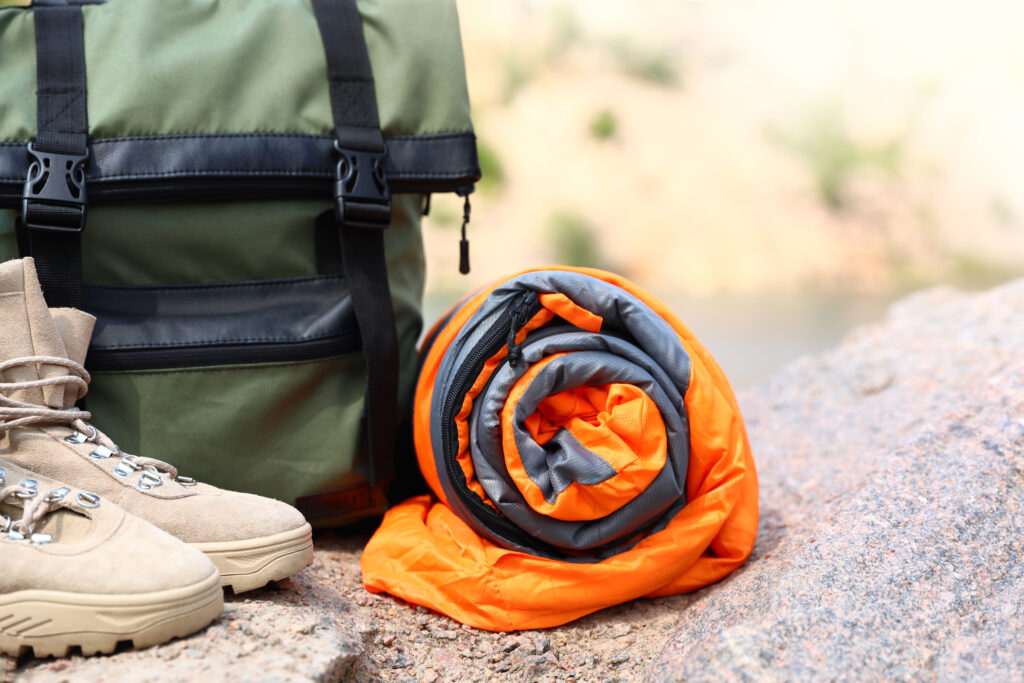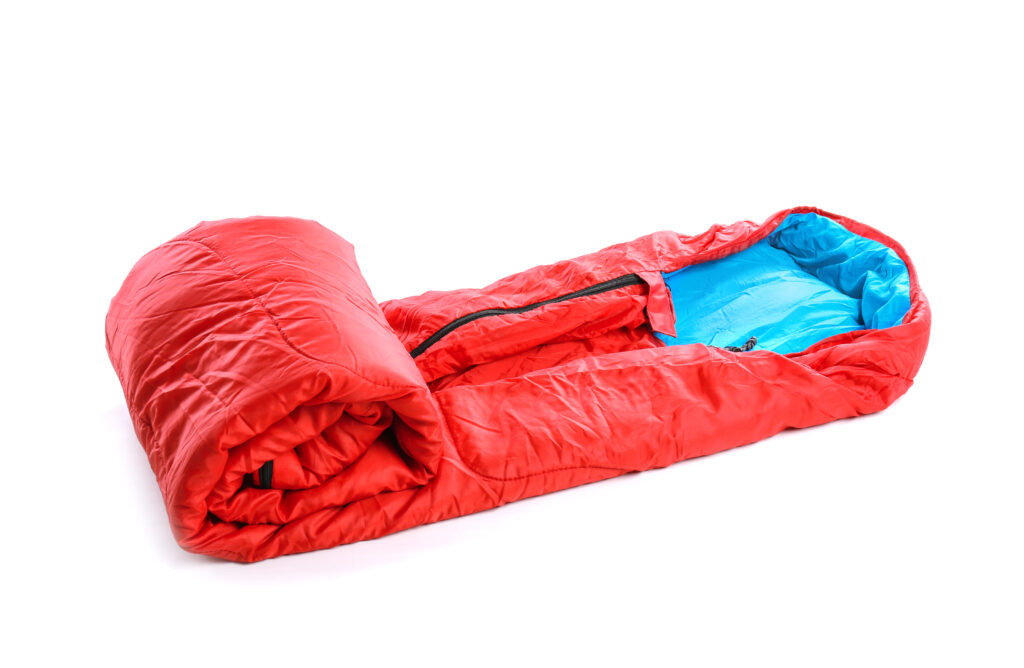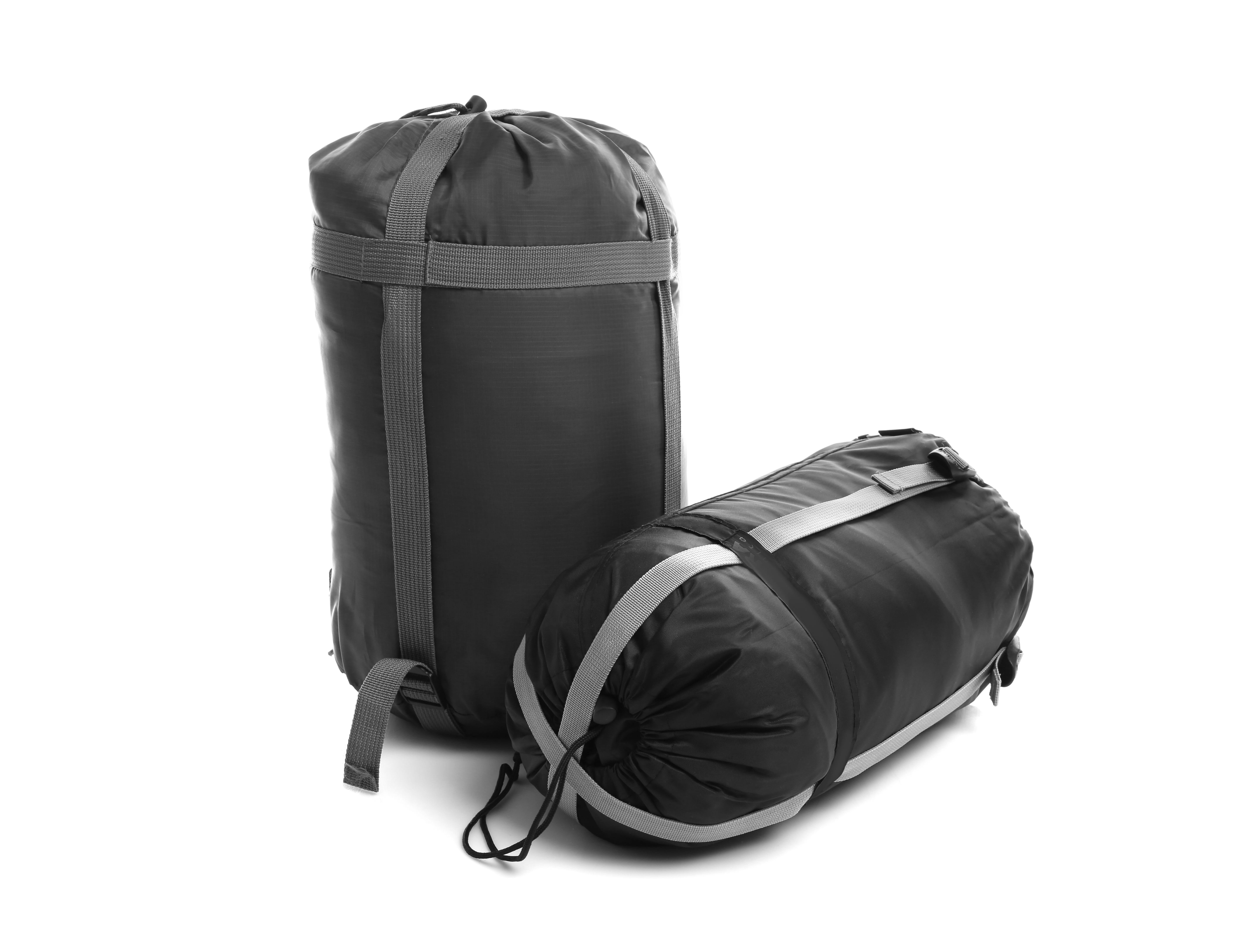
When you’re getting ready for an overnight hike or outdoor trip, one of the most important pieces of equipment is your sleeping bag. Military sleeping bags are used by the army and by many civilians who enjoy their design and quality. But how much do these weigh?
The average military sleeping bag weighs about 4 lbs., with a range of about 2-10 lbs., depending on the purpose and size. However, the overall weight depends on the material composition and what type of sleeping bag it is. For example, tropical sleeping bags are much lighter than thick winter ones.
Sleeping bags are essential for a successful night away from home, but there are a few factors to consider before you start packing your bags. Below, we’ll explore the average weight of sleeping gear, the different types of sleeping bags, and some of the best models to buy.
Average Weight Of Sleeping Gear

Sleeping Bag: 2-10 lbs.
Sleeping bags are probably the most important part of a sleeping kit. You could do without a lot of things on this list, but bundling up is a vital part of getting a good night’s sleep.
As mentioned above, sleeping bags can range in weight from 2-10 lbs. but you’ll usually end up around the 4-5 lbs. range. The weight of a sleeping bag usually depends on its thickness and whether it’s stuffed with down or synthetic materials.
Sleeping Bag Liner: 0.5-1.5 lbs.
Sleeping bag liners provide an extra layer of protection to you and your sleeping bag. They can serve a variety of purposes such as providing extra warmth, waterproofing your sleeping bag, and keeping it clean from oils and dirt.
These are quite lightweight and can be easily folded and carried inside a backpack or stuff sack. Most liners will weigh an average of 1 lb.
Sleeping Pad: 0.5-3 lbs.
Sleeping pads can provide extra comfort and padding for a sleeping bag, as well as protect it from debris and wet ground conditions. They usually come in the form of a foam mat or an inflatable air cushion.
Either way, sleeping pads are fairly light and will weigh an average of about 2 lbs.
Stuff Sack: 1-10 oz.
Stuff sacks are useful items that make it easy to compress and transport sleeping bags. While sleeping bags may not be heavy items, they can be bulky and unwieldy if they’re poorly compressed.
Stuff sacks are multi-purpose bags that can be used to store sleeping bags when they’re not being used. These are quite lightweight and weigh an average of 3-4 oz.
| Minimum Average Gear Weight: | Maximum Average Gear Weight: |
| 6 lbs. 1 0z. | 15 lbs. |
Different Sleeping Bag Types
Before you pick out a sleeping bag, you need to consider what type you’re looking for! Some factors to consider include things like where you’re going, how long you’re staying, and how warm you want to be when you sleep.
Sleeping bags come in a variety of sizes, designs, thicknesses, and material compositions. To pick out the model that will work best for you, check out some of the different types listed below.

First up, let’s consider the stuffing of your sleeping bag! The two main types are synthetic stuffing or down. These two different fillings can affect the price, weight, warmth, and compression limits of a sleeping bag, so it’s an important thing to think about.
Down:
Down stuffing is made from the fluffy, soft under-feathers of birds (typically geese). Some down is a combination of these downy feathers and larger feathers, but the material is similar regardless.
The structure of these feathers serves to trap air and preserve warmth. Down sleeping bags are generally a bit heavier than synthetic ones, but they can still be easily rolled up and compressed. They’re also quite durable and can last for several years when they’re taken care of.
On the downside (no pun intended) these sleeping bags can get ruined if they get wet. The feathers absorb water and can clump up and lose their warmth and loft (aka fluffiness). If you’re going to be spending a lot of time in rough and wet conditions, a down sleeping bag might not be the best fit.
Due to their organic stuffing, down sleeping bags are also more expensive than synthetic bags. This price might be worth it if you’ll take care of it, but the price difference could be a deciding factor.
Synthetic:
Synthetic sleeping bags are basically just sleeping bags that are stuffed with polyester instead of down. The polyester is better insulated against damp conditions and it will dry more quickly if it does get wet.
Polyester is also hypoallergenic, which could be important if someone is allergic to feathers! Not many people are though, so this may not be a big factor.
Additionally, synthetic sleeping bags are often lighter than down as well! After all, despite the common saying, some materials are actually lighter than feathers. The weight of every sleeping bag depends on the manufacturer and design, but in many cases, synthetic stuffing is lighter than down.
It can’t be compressed as much as down and may suffer a bit of insulation loss from repeated rolling and unrolling, but it’s still a good option.
One of the biggest appeals of synthetic sleeping bags (apart from the waterproofing) is their cost. They are much cheaper than down and generally require less upkeep.
Cold Weather Vs Warm Weather
As you try to decide which type of stuffing you prefer, you should also consider where you’ll be using the sleeping bag most often. The climate you’ll be sleeping in could affect your choice.
If you’ll be spending a lot of time in chilly, below-freezing temperatures, you might want to consider a down sleeping bag. These are generally better for cold weather and will help conserve heat. They might be heavier, but they’ll keep you warm.
Cold-weather sleeping bags might also include elements such as mummy designs, drawstrings, and linings made of fur or cotton.
For more temperate/warm-weather climates, a synthetic sleeping bag might be the right call. They’ll hold up better under wet or humid conditions, and will prevent you from getting too hot at night.
These are also light, slick, and better equipped to handle damp conditions. Synthetic sleeping bags might be the best choice for warmer weather.
Best Military Sleeping Bags

Extreme Cold Weather Sleeping Bag
Weight: 9.5 lbs.
This mummy-style sleeping bag is designed to withstand very cold temperatures. It’s even worked successfully at temperatures below 10 degrees Fahrenheit!
The sleeping bag is well-insulated with a cotton lining. The stuffing is a mixture of polyester and down feathers, which makes it fluffy, warm, and soft.
For more information on this sleeping bag including prices, product reviews, availability, and delivery options, visit this link.
GI Intermediate Cold Weather Sleeping Bag
Weight: 7.5 lbs.
This sleeping bag has been officially approved for use by the U.S. military. It’s insulated with waterproof materials that will be able to withstand cold and damp weather conditions.
This sleeping bag can stand up to cold weather, but it performs best in the 10-40 degree range. This makes it great for outdoor trips during the spring and fall.
For more information on this sleeping bag including prices, product reviews, availability, and delivery options, visit this link.
GI Casualty Evacuation Sleeping Bag
Weight: 8.5 lbs.
This sleeping bag was developed during the Korean war and is still approved for use by the military today. It can withstand the harshest winter temperatures with a combination of heat-saving technologies.
The sleeping bag is stuffed with several pounds of down feathers and it also includes a khaki liner and fur-lined hood to preserve heat. It comes with a waterproof bag, which will help protect it from the elements when it’s not in use.
For more information on this sleeping bag including prices, product reviews, availability, and delivery options, visit this link.
Woodland Camouflage Sleeping Bag
Weight: 4.4 lbs.
This sleeping bag has a sleek design, which is complemented by a camouflage pattern. This has synthetic stuffing and it can perform well at temperatures between 14-32 degrees. It also works well for warmer weather because of the breathable material.
It has a mummy design that provides a snug and comfortable sleep environment. This sleeping bag also comes with a compression bag that makes it easier to pack around. It’s lightweight and is easy to transport on long outdoor trips.
For more information on this sleeping bag including prices, product reviews, availability, and delivery options, visit this link.
Commando Sleeping Bag
Weight: 2.4 lbs.
This commando sleeping bag is the lightest option on the list and is perfect for people who will be taking long outdoor trips where every ounce counts. This is made of 100% polyester, which makes it a lightweight synthetic option. This design means that it’s also highly waterproof.
This sleeping bag is best for temperate/warm weather camping. It works well at 50 degrees and warmer, so don’t plan any winter trips with this one. If you’re looking for a light, waterproof, breathable option, the commando sleeping bag could be the best choice for you.
For more information on this sleeping bag including prices, product reviews, availability, and delivery options, visit this link.